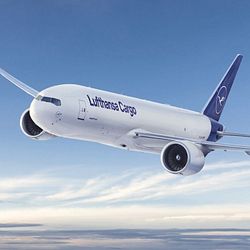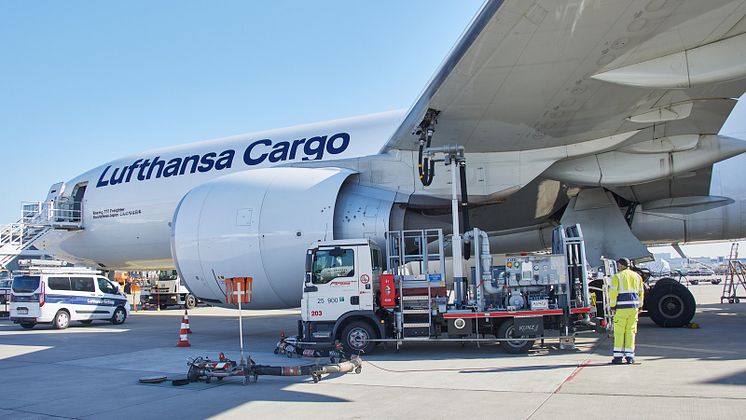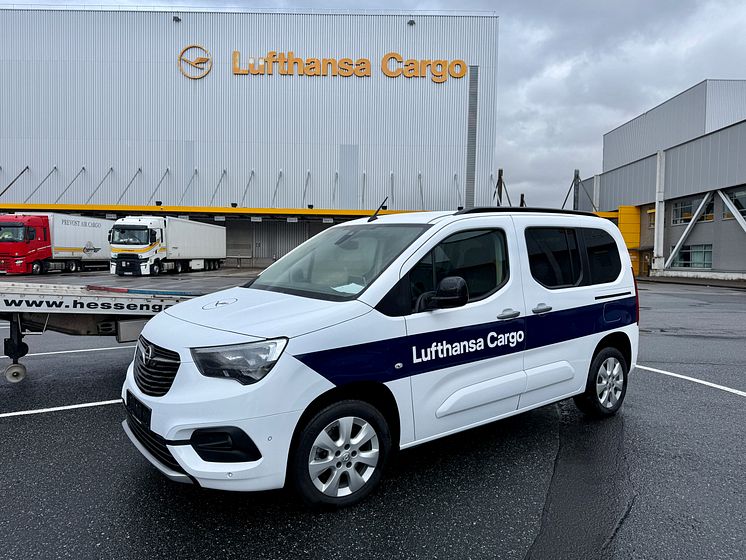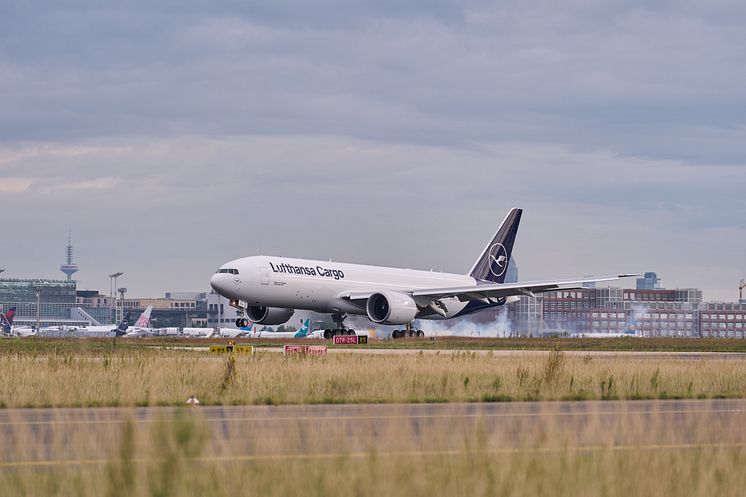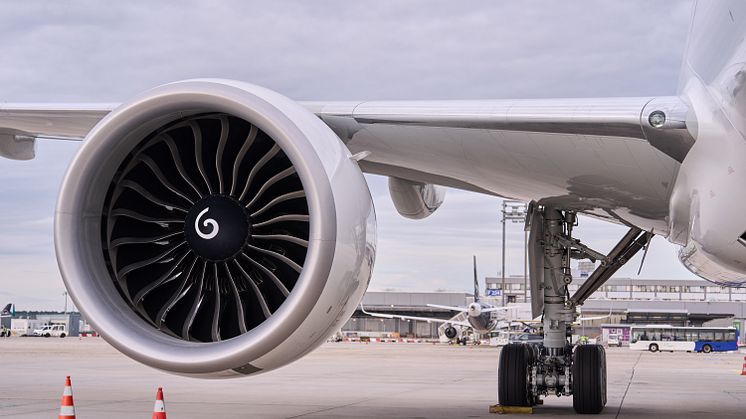
Press release -
Looking back to 2024: Lufthansa Cargo's most important measures for CO2 reduction
- The company aims to achieve the greatest possible reduction in CO2 emissions in flight operations
- More than 25,000 tons of CO2 saved through "Sustainable Choice" and fuel efficiency measures alone
Responsible action is the basis of Lufthansa Cargo's business activities. The cargo airline focuses on quality, safety and reliability in airfreight transportation to enable global business in the most sustainable way possible. “We want to take responsibility and drive forward our ambitious climate targets,” says Nicole Mies, Head of Communications & Corporate Social Responsibility at Lufthansa Cargo. ”In 2024, together with our customers, partners and the scientific community, we have explored new possibilities, taken many steps and made valuable progress. We have not yet reached our goal everywhere – but we are consistently working on designing an airfreight system that is efficient, innovative and future-oriented.”
Lufthansa Cargo's worldwide environmental management system has once again been certified according to the international environmental standard ISO 14001. It ensures the continuous and transparent control, monitoring and improvement of environmental performance - not only in the air, but also on the ground. To maintain certification, the company must demonstrate to external auditors each year that the requirements of the standard are being met and that the system is functioning at all levels.
Modern fleet
As an airline, almost 99 percent of Lufthansa Cargo's total carbon footprint is generated by flight operations. The biggest lever for reducing CO2 in air transport is the use of new, more fuel-efficient aircraft. Aircraft of the latest generation consume up to 30 percent less fuel and emit correspondingly less CO2 than their predecessors. For its own long-haul fleet, which has an average age of 7.6 years, Lufthansa Cargo relies exclusively on the Boeing 777F - currently the most modern and efficient freighter in its class. In the summer of 2024, the company has welcomed its 18th long-haul freighter at Frankfurt Airport. An additional seven Boeing 777-8 freighters with the latest technology have been ordered and are expected to be delivered by 2030.
SAF Partnerships
The use of Sustainable Aviation Fuel (SAF) is a decisive technological key to more sustainable flying and essential for the energy transition in aviation. It is based on biogenic residues and has an 80 percent lower carbon footprint than conventional kerosene over its entire life cycle. With its "Sustainable Choice" add-on service, Lufthansa Cargo invites all customers to contribute to the decarbonization of airfreight. This optional service, which can be booked easily via the Lufthansa Cargo website, combines CO2reduction through the use of SAF with a contribution to high-quality climate protection projects. At the same time, large individual agreements, so-called bulk deals, can be tailored for interested partners of Lufthansa Cargo. In 2024, Lufthansa Cargo could save around 8,500 tons of CO2 in this way.
Fuel efficiency measures
Lufthansa Cargo strives for a maximum reduction of CO2 emissions in flight operations and relies on effective measures to achieve this. In addition to a modern fleet and the use of SAF, the focus is on continuous optimization of flight operations. Lufthansa Cargo's fuel efficiency measures saved around 5,700 tons of kerosene in 2024, equivalent to a CO2 reduction of around 18,000 tons. The Statistical Contingency Fuel (SCF) method makes the largest single contribution. This statistical analysis makes it possible to more accurately calculate a portion of the fuel reserve required for each flight. This involves analyzing historical flight consumption and taking into account current factors - such as weather conditions at the destination airport - when planning fuel. This helps to avoid unnecessary fuel reserves without compromising flight safety. At the end of 2024, SCF was enhanced with further automated data integration to more accurately calculate fuel planning for taxiing on the ground prior to take-off. This optimized taxi fuel calculation further increases the efficiency of fuel planning for the entire flight process. Another important measure is "RETI" (Reduced Engine during Taxi In): During taxiing to the parking position, one engine is shut down whenever possible, saving approximately 400 metric tons of kerosene and 1,200 metric tons of CO2 per year.
Measures on the ground
On the ground, the cargo airline is working hard to achieve its goal of carbon neutrality by 2030. In addition, the company is constantly looking for new ways to save energy, fuel and resources and reduce waste. One example of the many measures in 2024 is the conversion of the company car fleet to electric vehicles. The 30 vehicles used for business travel at the Frankfurt hub will gradually be replaced by new electric vehicles. The first new vehicles have already arrived and are in use. At the same time, the complete charging infrastructure at the Lufthansa Cargo Center was implemented with a total of six charging points in two buildings.
Defective and expired cargo belts have been recycled in cooperation Rhein-Main Association of Sheltered Workshops (WfB) since summer 2024. The recyclable material is used for construction site safety barriers or insulation panels, while the aluminum from the turnbuckles is recycled. In this way, Lufthansa Cargo in Frankfurt saves several tons of waste each year.
100-flight program
In addition, Lufthansa Cargo actively supports research into the so-called non-CO2climate effects of aviation. The Lufthansa Group participates in research projects to better understand these effects and to develop measures to reduce the overall climate impact. Together with Lufthansa Airlines and other German airlines, Lufthansa Cargo participated in the "100 Flights Programme", which was initiated by the Working Group on Climate Neutral Aviation of the German Federal Ministry of Economics and the German Federal Ministry of Transport. Lufthansa Cargo selected 23 flights, 13 of which were adjusted in altitude during route planning to avoid condensation trails, and a further 10 reference flights for comparison. The aim is to use the data to predict contrail-prone areas in flight planning and to test the quality and reliability of the data. Satellite observations will be used and evaluated to verify whether the diverted flights were actually able to avoid contrails. The flights are evaluated on the basis of data and prototype computer programmes developed as part of the “D-KULT” research project, together with the project partners German Weather Service, German Air Traffic Control (DFS), German Aerospace Center (DLR) and Lufthansa Systems.
Climate protection is teamwork
The necessary changes can only be achieved together with strong partners. Lufthansa Cargo is closely networked and actively exchanges ideas with customers and innovation drivers from research, business and politics. . In 2024, for example, the company announced its entry into the Smart Freight Centre (SFC) community. The SFC is an international non-profit organization focused on reducing greenhouse gas emissions from freight transport. Its goal is to help its members and partners reduce their greenhouse gas emissions in order to achieve a zero-emission global logistics sector by 2050 or earlier, in line with the Paris Agreement. Working with the industry-leading SFC network supports Lufthansa Cargo's strategy for a more sustainable future.
Topics
Lufthansa Cargo
Lufthansa Cargo is one of the world's leading cargo airlines and part of the Lufthansa Group, Europe's largest airline group. Through its four cargo hubs in Frankfurt, Munich, Brussels and Vienna, the airfreight specialist transports an average of 2,500 tons of freight per day. This is based on a strong and reliable airport-to-airport network that covers some 350 destinations in more than 100 countries. Lufthansa Cargo markets the cargo capacities of the passenger aircraft of Lufthansa Airlines, Austrian Airlines, Brussels Airlines, Discover Airlines and SunExpress, as well as its own freighter fleet of 18 Boeing 777F and four Airbus A321F. In addition, some 300 trucks operate daily under a Lufthansa Cargo flight number. Together with its subsidiaries, Lufthansa Cargo offers customized, fast and efficient logistics solutions along the entire supply chain. In this way, the company fulfills its mission "Enabling Global Business" and connects markets and trading partners worldwide. Innovative technologies and investments in sustainability play a central role. In addition to a modern fleet and the use of sustainable aviation fuel (SAF), the focus is on continuous optimization of flight operations. In 2024, the company generated revenues of 3.26 billion euros and a transport performance of 8.5 billion freight tonne-kilometers. It currently employs approximately 4,200 people worldwide.



